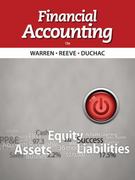








I am giving the scenario for the following below please help and explain the answers thoroughly to help better understand this for my last simulation. Please use the template for setup it is placed below.
All documents, data, and graphs are attached below:
Below the transactions are templates to go off of for setup:
Determine the direct materials variance.
Direct Materials Variance
Determine the direct labor variance.
Determine the factory overhead variance.
Scenario-
Quivers Inc. began operations on January 1 of the current year. The company produces eight-ounce bottles of jet wax called Ophelia Shine. The wax is sold wholesale in 12-bottle cases for $100 per case. There is a selling commission of $20 per case. The January direct materials, direct labor, and factory overhead costs are as follows: DIRECT MATERIALS Cost Behavior Units per Case Cost per Unit Direct Materials Cost per Case Cream base Variable 100 oz $0.02 $2.00 Natural oils Variable 30 oz $0.30 $9.00 Bottle (8 oz) Variable 12 bottles $0.50 $6.00 Total $17.00 DIRECT LABOR Department Cost Behavior Time per Case Labor Rate per Hour Direct Labor Cost per Case Mixing Variable 20 minutes $18.00 $6.00 Filling Variable 5 minutes $14.40 $1.20 Total 25 minutes $7.20 FACTORY OVERHEADDIRECT LABOR Department Cost Behavior Time per Case Labor Rate per Hour Direct Labor Cost per Case Mixing Variable 20 minutes $18.00 $6.00 Filling Variable 5 minutes $14.40 $1.20 Total 25 minutes $7.20 FACTORY OVERHEAD Cost Behavior Total Cost Utilities Mixed $600 Facility lease Fixed $14,000 Equipment depreciation Fixed $4300 Supplies Fixed $660 Total $19,560Part C. August Variance Analysis During September of the current year, Robin was asked to perform variance analyses for August. The January operating data provided the standard prices, rates, times, and quantities per case. There were 1,500 actual cases produced during August, which was 250 more cases than planned at the beginning of the month. Actual data for August were as follows: Actual Direct Actual Direct Material Materials Materials Price per Unit Quantity per Case Cream Base (oz.) $ 0.016 102 Natural Oils (oz.) 64 0.32 31 Bottles 0.42 12.5 Actual Direct Activity Actual Direct Labor Time Labor Rate per Case (minutes) Mixing 18.20 19.50Actual Direct Activity Actual Direct Labor Time Labor Rate per Case (minutes) Mixing 18.20 19.50 Filling 14.00 5.60 Actual Variable Overhead $ 305.00 Normal Volume (Cases) 1,600 The prices of the materials were different from standard due to fluctuations in market prices. The standard quantity of materials used per case was an ideal standard. The Mixing Department used a higher grade labor classification during the month, thus causing the actual labor rate to exceed standard. The Filling Department used a lower grade labor classification during the month, thus causing Intructio ns 10. Determine and interpret the direct materials price and quantity variances for the three materials. 11. Determine and interpret the direct labor rate and time variances for the two departments. Round hours to the nearest hour.Normal Volume (Cases) 1,600 he prices of the materials were different from standard due to fluctuations in market prices. The standard quantity of materials used per case was an ideal tandard. The Mixing Department used a higher grade labor classification during he month, thus causing the actual labor rate to exceed standard. The Filling Department used a lower grade labor classification during the month, thus causing ntructio U. Determine and interpret the direct materials price and quantity variances for he three materials. 1. Determine and interpret the direct labor rate and time variances for the two departments. Round hours to the nearest hour. 2 . Determine and interpret the factory overhead controllable variance. 3.Determine and Interpret The factory overneda volume variance. Assess why ire the standard direct labor and direct materials costs in the calculations for arts (10) and (11) based on the actual 1,500-case production volume rather han the planned 1,375 cases of production used in the budgets for questions (6)equirement #10: Determine the direct materials variance. Direct Materials Price Variance Actual Quantity Cream Base Natural Oils Bottles Cream BaseNatural Oil: Bottles Cases Actual Price Amount Standard Price Total Difference * Actual Quantity (Units) Direct Materials Price Variance Decision - Analysis Direct Materials Quantity Variance Standard Quantity ream Base Natural Oils Bottles Cream BaseNatural Oil: BottlesA B C D E F G H J K L M N O Analysis Direct Materials Quantity Variance Standard Quantity Cream Base Natural Oils Bottles Cream BaseNatural Oil: Bottles Cases Actual Quantiy Amount Standard Quantity Total Difference * Standard Price Direct Malenais Quanmy Decision Analysisquirement #11: Determine the direct labor variance. Direct Labor Rate Variance Actual Time Mixing Filling Department Departmen Mixing Filling Actual Rate Units Standard Rate Minutes Difference Hours * Actual Time (Hours) Total Direct Labor Rate Variance Decision Analysis Direct Labor Time Variance Standard Time Mixing Filling Department Departmen Mixing FillingX V A B C D E F G H I J K L M N O P . Direct Labor Time Variance Standard Time Mixing Filling Department Departmen Mixing Filling Actual Time Units Standard Time Minutes Difference Hours * Standard Rate Total Direct Labor Time Variance Decision Analysis 8 - Factory Overhead Cost 9 - Budgeted Income Statement 10 - Direct Materials Variance 11 - Direct Labor Variance 12 - Factory Overhead Variance Grading Rubric ... + :Factory Overhead Controllable Variance overhead (utility Variance cost) at standard cost Actual variable overhead Cases Variable overhead at standard cost Total fixed factory overhead Factory overhead controllable variance Total Decision Factory Overhead Volume Variance Fixed factory overhead rate Normal volume (cases) Cases Actual volume (cases) Total fixed factory overhead Difference Total * Fixed factory overhead rate $0.00 DecisionFactory Overhead Volume Variance Fixed factory overhead rate Normal volume (cases) Cases Actual volume (cases) Total fixed factory overhead Difference Total * Fixed factory overhead rate $0.00 Decision Analysis


























